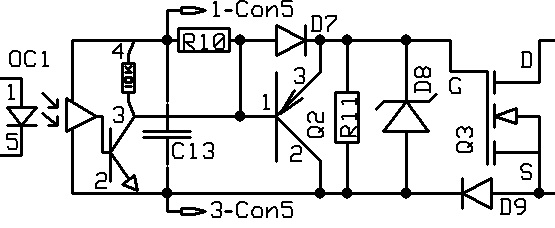|
Electronics
The art of control
The main ingredients of electronics are integrated circuits,
Don't settle for what's around, customize PLC learning to how you want it,
As a starting basis, there are two types (or perhaps class is a better word) of electronic component, that is Passive and Active. Passive components include resistors, capacitors ans inductors. Active components include diodes, transistors and integrated circuits (IC).
How do you tell the difference? To know the difference between the two is quite easy, active components require power to operate, passive components do not. An active component will have some type of control input(S) and some type of controlled output(s), also quite possibly separate power connections.
These components are the building blocks of electronics, for example the phrase "fault finding down to component level" means diagnosing faulty components within a printed circuit board (PCB).
Circuits normally always contain active and passive electronic components, the components are generally held together by being mounted on a printed circuit board (PCB). The PCB also has another important role to play as well as holding the components which is the printed part of its name.
The printed part of a PCB refers to the copper pattern which forms the inter component connections. These connections are on or sandwiched in the PCB kinda like a lot of flat wires on (or in) the PCB.
These components are the building blocks of electronics, for example the phrase "fault finding down to component level" means diagnosing faulty or failed components on a printed circuit board (PCB), that are preventing it from operating as it's been designed to do.
I've said designed to do here, as it may still operate to the untrained eye, the fault caused by for example a failed capacitor could put a timed pulse out of place, thus causing problems is the following circuits.
Components can be separated into two (very) basic categories, Passive and Active. Passive components are capacitors, resistors and inductors. Active components are diodes, transistors, integrated circuits (IC).
Both have an effect when placed suitably in a circuit but the active components have the ability to control the electrons within the circuit around it. This makes signal generation, amplitude and shaping possible along with a multitude of other electronic effects.
Commonly (incorrectly) lumped together, electronics technology is quite a different science compared to electrical and/or electromechanical sciences. Electrical and electromechanical sciences are involved with the production and distribution of the electrical energy.
Achieving this by storage, switching and conversion of the produced electrical energy into other energy forms like heat, light and cooling. This in turn is achieved by using passive components, such as resistors, capacitors, switches, relays, transformers, motors, generators and batteries in various electrical circuits.
The separation of these two sciences began with Lee De Forest's invention of the triode in 1906, the triode made possible electrical amplification of otherwise weak signals of audio and radio with a non mechanical components. Up until the 1950's, this area of expertise was referred to as radio technology. This is due to its main application being in the design and theory of RF (Radio Frequency) transmitters, RF receivers and Vacuum Tubes.
These days pretty much all electronic devices will use semiconductor integrated components to carry out electronic control. The area and study of semiconductors and its related technology is recognized as a branch of solid state physics, but the design and manufacture of electronic and electrical circuits for practical use in the solving of problems is under the electronics engineering umbrella. Have a look at the Electrical page.
Return from Electronic to Home page.
PLEASE feel free to use this button and donate You Are Secure! so Machine-Information-Systems.Com can keep helping you.
|





